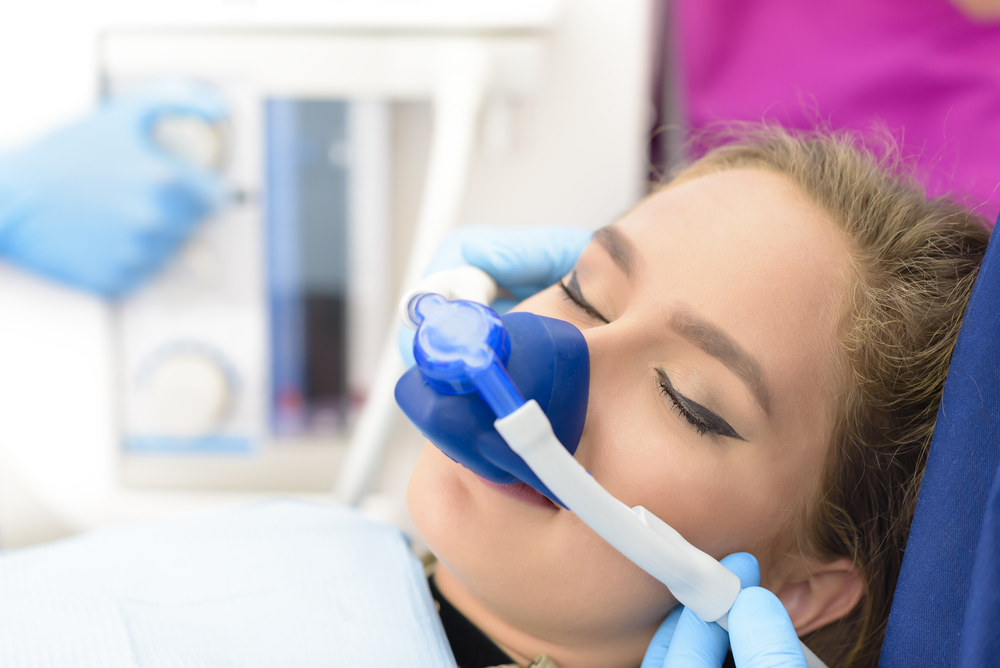Dental Sedation: Your Guide to Pain-Free Dentistry

Are you someone who dreads going to the dentist? Do you avoid dental appointments due to fear or anxiety? Dental sedation might be the solution you are looking for. In this post, we will uncover everything there is to know about dental sedation – from what it is and how it works to its benefits and potential risks involved. We will also discuss different dental sedation types and who is an ideal candidate for it. Lastly, we will cover the recovery process and tips on how to make it as smooth as possible. Say goodbye to your dental fears and hello to pain-free dentistry with our ultimate guide to dental sedation.
Diverse Types of Dental Sedation
Diverse types of dental sedation are employed to offer patients a comfortable experience. Laughing gas, in pill form or through inhalation, is the most common type of anesthesia used in the dentist’s chair. Local anesthetics are often administered for minor procedures, while more intensive treatments may require general anesthesia. The American Society of Anesthesiologists provides guidelines for administering different types of anesthesia, ensuring patients’ general health and comfort during dental procedures. Patients must discuss their anxiety levels with dental professionals to determine the most suitable type of sedation for their needs.
Preparing for Dental Sedation
Before dental sedation, patients should divulge their medical history and current medications. Addressing any concerns or queries about sedation dentistry with your dentist is important. Depending on the type of anesthesia, patients may be required to fast before the procedure. The dentist’s office guidelines will outline appropriate clothing and food and drink restrictions before the sedation. Patients are advised to communicate any general health changes to their dentist before the procedure.
The Process of Dental Sedation
Patients undergoing dental procedures often receive sedation through various delivery methods, such as oral medication, inhalation, or intravenous administration, tailored to their specific needs. Patients can effectively respond to verbal commands throughout the process, ensuring their safety and overall comfort. Dental professionals continuously monitor and adjust the level of sedation as necessary, utilizing oxygen and other essential monitoring equipment to uphold patient safety. The dental team’s specialized training in handling diverse types of anesthesia ensures a positive and stress-free patient experience in the dentist’s chair.
Post-Dental Sedation Care
After dental sedation, patients are advised to rest and avoid driving or operating heavy machinery. Some may experience drowsiness, a common side effect that dissipates over time. Patients must follow the post-sedation care instructions provided by their dentist and reach out if they have any concerns. Dental professionals also offer guidance on resuming normal activities after sedation. Proper recovery is essential, and patients should prioritize their general health, wearing comfortable clothing, as the American Society of Anesthesiologists recommends. Laughing gas and local anesthetics are the most common anesthesia administered in the dentist’s chair.
The Upside of Dental Sedation
Experiencing dental anxiety shouldn’t hinder necessary procedures, thanks to dental sedation. Patients feel relaxed, comfortable, and at ease during this type of anesthesia treatment. It provides a pain-free and stress-free dental appointment, allowing patients to address oral health concerns and improve their overall well-being. Dental professionals prioritize patients’ comfort and peace of mind, as they can receive dental care with minimal anxiety in the dentist’s chair. Laughing gas, the most common type of dental sedation, is often administered in the dentist’s office, ensuring a comfortable patient experience.
Potential Complications and How to Avoid Them
Proper general health assessment is crucial for ensuring anesthesia safety during dental sedation. Continuous monitoring of vital signs throughout the procedure can effectively prevent potential complications. Patients should openly communicate any health issues with their dentist before undergoing sedation dentistry. Selecting the most common and suitable type of anesthesia can significantly minimize the risk of complications. Choosing a qualified healthcare provider, endorsed by the American Society of Anesthesiologists, is imperative to ensure safe and successful dental sedation.
Candidacy for Dental Sedation
Consider various types of sedation dentistry, each tailored to different anxiety levels. Dental sedation is particularly beneficial for patients with dental phobia and those undergoing extensive procedures like root canals or implants. Communicating your sedation preferences with your dentist to ensure a comfortable experience in the dentist’s chair is essential. The American Society of Anesthesiologists stresses the importance of discussing your general health and any medication you’re taking, as this information influences the type of anesthesia used. Additionally, wearing comfortable clothing to your dental appointment can enhance your overall experience in the dentist’s office.
Dental Sedation During Pregnancy: Is it Safe?
Consult with your healthcare provider before considering dental sedation during pregnancy. Minimal sedation might be an option for dental procedures, but discussing this with your dentist and healthcare professional is important. Local anesthesia could be considered as an alternative to sedation. Always ensure that qualified healthcare professionals administer any sedation during pregnancy.
Conclusion
In conclusion, dental sedation can be a game-changer for those who experience dental anxiety or have a low pain threshold. It allows you to undergo necessary dental procedures without fear or discomfort. However, it’s crucial to understand the different types of dental sedation available and their associated benefits and risks. Before undergoing dental sedation, preparing yourself and following post-sedation care instructions is important for a smooth recovery. Additionally, it’s essential to consult with your dentist to determine if you are an ideal candidate for dental sedation and to address any concerns or questions you may have. Remember, dental sedation can provide a pain-free dentistry experience, making it easier to maintain good oral health.
Contact us today at Park Street Dental for more information!
